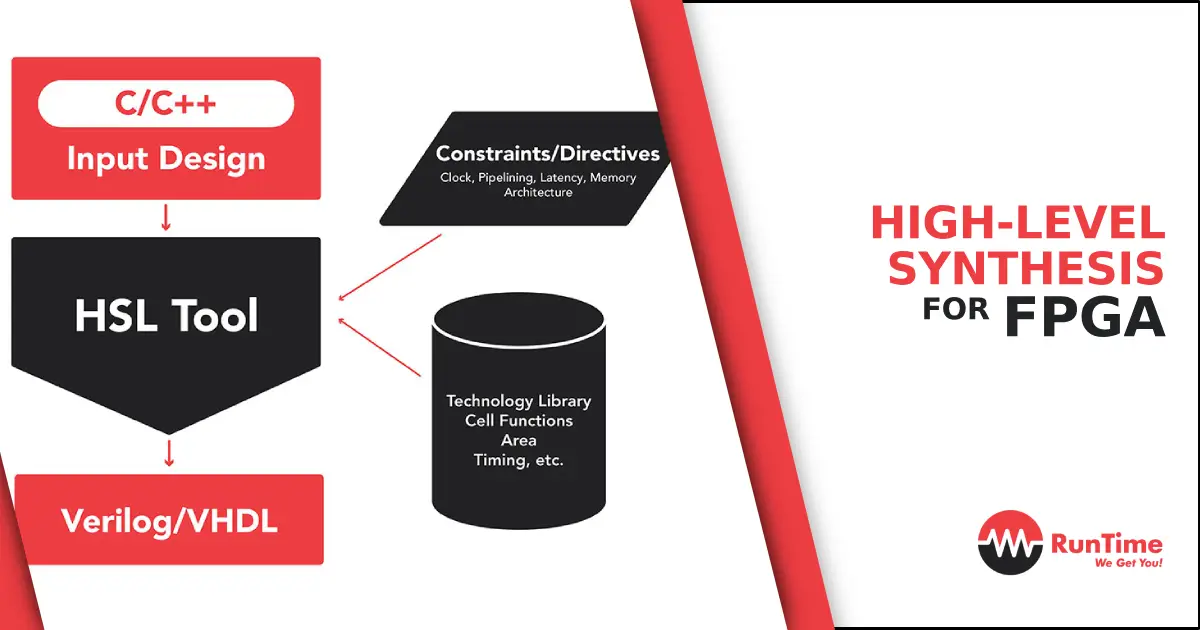Field-Programmable Gate Arrays (FPGAs) have emerged as a versatile solution for accelerating various computational tasks. High-Level Synthesis (HLS) plays a pivotal role in optimizing FPGA design, allowing developers to work at a higher abstraction level and significantly reducing time-to-market. Let’s delve into the best practices and insights surrounding HLS for FPGAs, with a focus on the overview of HLS and the utilization of HLS for C/C++ to RTL synthesis.
What is HLS?
High-Level Synthesis is a design methodology that bridges the gap between high-level programming languages and hardware description languages. HLS tools transform high-level code, typically written in languages like C, C++, or OpenCL, into Register-Transfer Level (RTL) code suitable for FPGA implementation. This abstraction allows designers to express their algorithms and functionality in a more familiar programming paradigm, making the FPGA design process more accessible and efficient.
Using HLS for C/C++ to RTL Synthesis
Expressiveness of C/C++
HLS for C/C++ to RTL synthesis leverages the expressiveness of these high-level programming languages. Designers can describe complex algorithms and computations using the rich feature set provided by C/C++, allowing for concise and readable code.
Abstraction from Low-Level Details
One of the primary advantages of using HLS for C/C++ to RTL synthesis is the abstraction from low-level hardware details. Designers can focus on algorithmic development and high-level optimizations without delving into the intricacies of RTL coding, significantly speeding up the design process.
Productivity Gains
The use of C/C++ in HLS facilitates faster development cycles. Designers accustomed to software development practices can apply their programming skills directly to FPGA design. This reduces the learning curve associated with hardware description languages, leading to increased productivity.
Automatic RTL Generation
HLS tools automatically generate RTL code from C/C++ descriptions. This automated process simplifies the translation of high-level algorithms into hardware implementations, allowing designers to explore different design options and optimizations more efficiently.
Debugging and Profiling
C/C++ HLS tools often provide debugging and profiling features, allowing designers to analyze the performance of their code at a higher level of abstraction. This aids in identifying bottlenecks and optimizing the algorithm before generating RTL code.
Code Reusability
HLS facilitates code reusability by allowing designers to integrate C/C++ functions into their FPGA designs. This is particularly advantageous when incorporating existing software components into a hardware-accelerated system, promoting a seamless combination of software and hardware.
Parallelism and Pipelining
HLS tools automatically explore parallelism and pipelining opportunities in the C/C++ code. Designers can further enhance parallel execution by providing pragma directives to guide the synthesis process, enabling efficient utilization of FPGA resources.
Best Practices for High-Level Synthesis in FPGA Design
Algorithmic Exploration
Before diving into HLS, thoroughly analyze and understand the algorithm to be implemented. Identify performance-critical sections and potential optimizations. HLS tools are effective when guided by a well-optimized high-level algorithm.
Code Partitioning
Break down the algorithm into smaller, manageable functions. This allows for better parallelization and optimization during the synthesis process. Clearly define interfaces between different modules to ensure seamless integration.
Dataflow Optimization
Leverage HLS tools’ capabilities for optimizing dataflow. Understand the data dependencies in the algorithm and explore opportunities for pipelining to maximize throughput. Efficient dataflow is crucial for achieving high performance on FPGAs.
Resource Utilization
Keep an eye on resource utilization during the HLS process. Understand the constraints of the target FPGA device and optimize the code accordingly. Strive for a balance between resource usage and performance.
Pragma Directives
HLS tools often provide pragma directives to guide the synthesis process. Utilize these directives to provide hints to the tool regarding loop unrolling, pipelining, or other optimizations. Experiment with different pragma options to find the optimal configuration.
Verification and Testing
Rigorous testing is essential in FPGA design. Use simulation tools to verify the functionality of the HLS-generated RTL code. Additionally, consider implementing testbenches and unit tests to validate the correctness of the design.
Iterative Development
HLS is an iterative process. Continuously refine and optimize the code based on synthesis results and performance metrics. Regularly evaluate different optimization strategies to achieve the desired balance between performance and resource utilization.
Key Insights into HLS for FPGAs
- Performance vs. Area Trade-offs: FPGA design often involves making trade-offs between performance and resource utilization. HLS tools provide insights into these trade-offs, allowing designers to make informed decisions based on project requirements.
- Portability Across FPGA Platforms: HLS-generated code can be portable across different FPGA platforms, providing flexibility in choosing hardware. However, it’s essential to consider the specific features and constraints of the target FPGA to achieve optimal results.
- Integration with Existing Codebases: HLS facilitates the integration of hardware acceleration into existing software projects. This is particularly advantageous for applications that require a combination of software and hardware components.
- Parallelism Exploration: HLS tools automatically explore parallelism in the code. Designers can further optimize parallel execution by manually guiding the tool through pragma directives. Understanding and leveraging parallelism is crucial for achieving optimal performance.
- Continuous Learning and Adaptation: The field of HLS for FPGAs is dynamic, with continuous advancements in tools and methodologies. Stay updated on the latest developments, tools, and best practices to adapt and enhance your FPGA design skills.
Conclusion
High-Level Synthesis for FPGAs, particularly when utilizing C/C++ for RTL synthesis, offers a powerful and efficient approach to hardware design. By leveraging the expressiveness of C/C++, designers can accelerate FPGA development, maintain code readability, and seamlessly integrate hardware acceleration into their projects. Adhering to best practices and staying informed about key insights will empower designers to unlock the full potential of HLS for accelerated and efficient FPGA designs.
Hire the Best Engineers with RunTime Recruitment
If you’re searching for highly skilled engineers worldwide, our expert team of engineers-turned-recruiters is here to help you. We offer in-depth knowledge of technical recruiting in the engineering industry to make the sourcing process much easier for you.
On the other hand, if you’re an engineer looking for new opportunities, RunTime Recruitment’s job site is the perfect place to find job vacancies.









